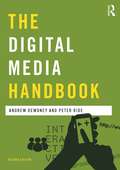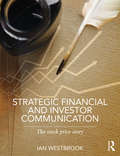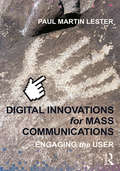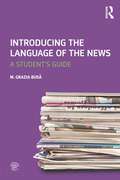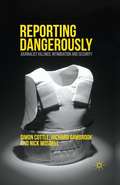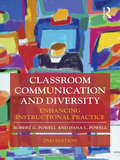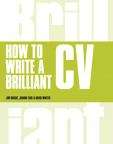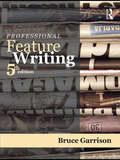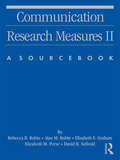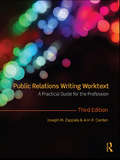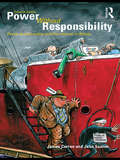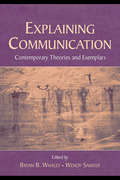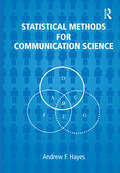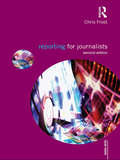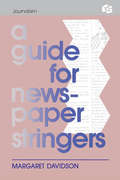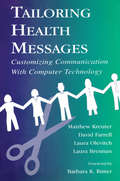- Table View
- List View
The Digital Media Handbook
by Andrew Dewdney Peter RideThe new edition of The Digital Media Handbook presents an essential guide to the historical and theoretical development of digital media, emphasising cultural continuity alongside technological change, and highlighting the emergence of new forms of communication in contemporary networked culture. Andrew Dewdney and Peter Ride present detailed critical commentary and descriptive historical accounts, as well as a series of interviews from a range of digital media practitioners, including producers, developers, curators and artists. The Digital Media Handbook highlights key concerns of today’s practitioners, analysing how they develop projects, interact and solve problems within the context of networked communication. The Digital Media Handbook includes: Essays on the history and theory of digital media Essays on contemporary issues and debates Interviews with digital media professionals A glossary of technical acronyms and key terms.
Strategic Financial and Investor Communication: The Stock Price Story
by Ian WestbrookIn today's aggressive marketplace, listed companies can no longer rely on their numbers to do the talking. If companies can't communicate their achievements and strategy, mounting research evidence suggests, they will be overlooked, their cost of capital will increase and stock price will suffer. In Strategic Financial and Investor Communication: the stock price story Ian Westbrook, principal of Australia's leading independent financial communications firm, argues just this: stock price is more a story than a number. Moreover, the book will teach you how to tell your own story by guiding you through the fast-paced world of financial corporate communication with a professional's pragmatism as well as academic rigour. Whether you're a student or a professional of PR, investor relations or corporate communications, this much-needed guide will teach you how to tell a compelling story about your company that the stockbroker, fund manager and corporate media cannot ignore.
Strategic Financial and Investor Communication: The Stock Price Story
by Ian WestbrookIn today's aggressive marketplace, listed companies can no longer rely on their numbers to do the talking. If companies can't communicate their achievements and strategy, mounting research evidence suggests, they will be overlooked, their cost of capital will increase and stock price will suffer. In Strategic Financial and Investor Communication: the stock price story Ian Westbrook, principal of Australia's leading independent financial communications firm, argues just this: stock price is more a story than a number. Moreover, the book will teach you how to tell your own story by guiding you through the fast-paced world of financial corporate communication with a professional's pragmatism as well as academic rigour. Whether you're a student or a professional of PR, investor relations or corporate communications, this much-needed guide will teach you how to tell a compelling story about your company that the stockbroker, fund manager and corporate media cannot ignore.
Digital Innovations for Mass Communications: Engaging the User
by Paul Martin LesterIn every field of mass communications—advertising, entertainment studies, journalism, public relations, radio-television-film, tourism, and visual reporting—professionals understand the importance of storytelling. Regardless of whether the finished product is a commercial, an in-depth investigative piece, a public service campaign, an independent documentary, a travelogue, or a collection of photographs, effective storytelling requires a combination of creativity, empathy, and expertise. Through the innovative technologies and techniques described in this textbook, students will learn how to turn passive readers and viewers into engaged and regular users. The sixteen chapters each include a brief introduction, assignments, simple-to-follow step-by-step exercises, and sources for additional information in which users will learn to produce apps, informational graphics, quick response codes, quizzes, simulations, smartphone and table icons, social media campaigns, three-dimensional pictures, and video. Students will work with the following programs: Blogger, Dreamweaver, Excel, Facebook, GeoCommons, Google Maps, Illustrator, Imgur, iMovie, Infogram, iShowU, JavaScript, JustGive, Kaywa, Kickstarter, LinkedIn, Onvert, Photoshop, Pixel Resort, QuickTime, Reddit, Second Life, SurveyMonkey, TheAppBuilder, Twitter, Vizualize, Wikipedia, Word, WordPress, and YouTube. When digital innovations are added to traditional print and screen presentations, a media user is not only allowed to interact with the information but can also physically engage with the story displayed. Giving students the tools they need to transform their storytelling in this manner is the ultimate goal of this textbook.
Digital Innovations for Mass Communications: Engaging the User
by Paul Martin LesterIn every field of mass communications—advertising, entertainment studies, journalism, public relations, radio-television-film, tourism, and visual reporting—professionals understand the importance of storytelling. Regardless of whether the finished product is a commercial, an in-depth investigative piece, a public service campaign, an independent documentary, a travelogue, or a collection of photographs, effective storytelling requires a combination of creativity, empathy, and expertise. Through the innovative technologies and techniques described in this textbook, students will learn how to turn passive readers and viewers into engaged and regular users. The sixteen chapters each include a brief introduction, assignments, simple-to-follow step-by-step exercises, and sources for additional information in which users will learn to produce apps, informational graphics, quick response codes, quizzes, simulations, smartphone and table icons, social media campaigns, three-dimensional pictures, and video. Students will work with the following programs: Blogger, Dreamweaver, Excel, Facebook, GeoCommons, Google Maps, Illustrator, Imgur, iMovie, Infogram, iShowU, JavaScript, JustGive, Kaywa, Kickstarter, LinkedIn, Onvert, Photoshop, Pixel Resort, QuickTime, Reddit, Second Life, SurveyMonkey, TheAppBuilder, Twitter, Vizualize, Wikipedia, Word, WordPress, and YouTube. When digital innovations are added to traditional print and screen presentations, a media user is not only allowed to interact with the information but can also physically engage with the story displayed. Giving students the tools they need to transform their storytelling in this manner is the ultimate goal of this textbook.
Introducing the Language of the News: A Student's Guide
by M. Grazia BusaIntroducing the Language of the News is a comprehensive introduction to the language of news reporting. Assuming no prior knowledge of linguistics, the book provides an accessible analysis of the processes that produce news language, and discusses how different linguistic choices promote different interpretations of news texts. Key features include: comprehensive coverage of both print and online news, including news design and layout, story structure, the role of headlines and leads, style, grammar and vocabulary a range of contemporary examples in the international press, from the 2012 Olympics, to political events in China and the Iraq War. chapter summaries, activities, sample analyses and commentaries, enabling students to undertake their own analyses of news texts a companion website with extra activities, further readings and web links. Written by an experienced researcher and teacher, this book is essential reading for students studying English language and linguistics, media and communication studies, and journalism.
Introducing the Language of the News: A Student's Guide
by M. Grazia BusaIntroducing the Language of the News is a comprehensive introduction to the language of news reporting. Assuming no prior knowledge of linguistics, the book provides an accessible analysis of the processes that produce news language, and discusses how different linguistic choices promote different interpretations of news texts. Key features include: comprehensive coverage of both print and online news, including news design and layout, story structure, the role of headlines and leads, style, grammar and vocabulary a range of contemporary examples in the international press, from the 2012 Olympics, to political events in China and the Iraq War. chapter summaries, activities, sample analyses and commentaries, enabling students to undertake their own analyses of news texts a companion website with extra activities, further readings and web links. Written by an experienced researcher and teacher, this book is essential reading for students studying English language and linguistics, media and communication studies, and journalism.
Reporting Dangerously: Journalist Killings, Intimidation And Security (PDF)
by Simon Cottle Richard Sambrook Nick MosdellMore journalists are being killed, attacked and intimidated than at any time in history. Reporting Dangerously: Journalist Killings, Intimidation and Security examines the statistics and looks at the trends in journalist killings and intimidation around the world. It identifies what factors have led to this rise and positions these in historical and global contexts. This important study also provides case studies and first-hand accounts from journalists working in some of the most dangerous places in the world today and seeks to understand the different pressures they must confront. It also examines industry and political responses to these trends and pressures as well as the latest international initiatives aimed at challenging cultures of impunity and keeping journalists safe. Throughout, the authors argue that journalism contributes a vital if often neglected role in the formation and conduct of civil societies. This is why reporting from 'uncivil' places matters and this is why journalists are often positioned in harm's way. The responsibility to report in a globalizing world of crises and human insecurity, and the responsibility to try and keep journalists safe while they do so, it is argued, belongs to us all.
Classroom Communication and Diversity: Enhancing Instructional Practice
by Robert G. Powell Dana L. PowellClassroom Communication and Diversity is an integral resource for teaching awareness of diversity issues and communication in the classroom. Drawing on the research in the communication and education disciplines, authors Robert G. Powell and Dana Caseau provide theoretical models and useful strategies for improving instructional practices. They address the ways in which culture influences communication in the classroom, and assist teachers in developing the skills necessary to meet the needs of the students in their classrooms. New to the second edition is an expanded skills component, additional teaching resources, and an increased focus on the role of diversity in the classroom. Much of the information shared in this text derives from the authors' research and experience in schools and from the experiences of others, including teachers, parents, and children. Their experiences, combined with the cross-disciplinary approach, produce a volume of unique perspectives and considerable insight.
Classroom Communication and Diversity: Enhancing Instructional Practice
by Robert G. Powell Dana L. PowellClassroom Communication and Diversity is an integral resource for teaching awareness of diversity issues and communication in the classroom. Drawing on the research in the communication and education disciplines, authors Robert G. Powell and Dana Caseau provide theoretical models and useful strategies for improving instructional practices. They address the ways in which culture influences communication in the classroom, and assist teachers in developing the skills necessary to meet the needs of the students in their classrooms. New to the second edition is an expanded skills component, additional teaching resources, and an increased focus on the role of diversity in the classroom. Much of the information shared in this text derives from the authors' research and experience in schools and from the experiences of others, including teachers, parents, and children. Their experiences, combined with the cross-disciplinary approach, produce a volume of unique perspectives and considerable insight.
How To Write A Brilliant CV (PDF)
by Jim Bright Joanne EarlHow do you get your CV to the top of the pile? When you apply for a job, your CV is compared to hundreds of others. You've only got the time it takes the employer to scan the pages to show how brilliant you are. How do you impress them when you don't know what employers are actually looking for? Now fully updated and revised to give you the most up-to-date and effective guidance, Brilliant CV tells you what a prospective employer is looking for and how to write it - now. #65533; Learn how to write CVs that make the shortlist #65533; Understand what employers love and loathe #65533; Revamp your existing CV with minimum effort #65533; Learn how to make the most of online applications and social media Find out what works in the real world and learn how to put it into practice through examples, exercises, samples and templates. With brilliant new chapters on how to tackle online applications and using social media to land that perfect job, you'll be well prepared and ready to really shine and stand out from the rest.
Professional Feature Writing
by Bruce GarrisonProfessional Feature Writing provides the basics of news media feature writing and establishes a solid foundation for students and writers making feature writing their career. This fifth edition offers a thorough and up-to-date look at newspaper, magazine, newsletter, and online publications, with emphasis on daily newspapers and consumer magazines. It serves as a comprehensive introduction to feature writing, emphasizing writing skills, article types, and the collegiate and professional writing life. With a wide variety of perspectives and experiences of both young and experienced writers, editors, publishers, and professors, the text is filled with practical guidance for writing a wide variety of features. Emphasizing writing values to strengthen a new writer's journalistic practices, author Bruce Garrison offers insights and expertise based on his own experience and the advice of professionals. He also includes lists of tips, observations, guidelines, sources, and story ideas, and gives a solid tour of the forms and approaches to feature writing. New for this edition are: Updated examples of feature writing, integrated throughout the text Profiles of young newspaper and magazine feature writers, highlighting their experiences and paths to success in the profession Coverage of computer-based research tools for writers, including discussion of on-line computer-based research tools with specific focus on the World Wide Web Discussion of online newspapers, magazines, newsletters, and original online publications and the role of feature writing for electronic publications. Each chapter includes excerpts and complete articles from the nation's leading publications. Building on introductory writing and reporting skills, this text is appropriate for upper-division journalism students learning feature writing and advanced writing topics. It will also serve as a valuable resource for freelance writers.
Professional Feature Writing
by Bruce GarrisonProfessional Feature Writing provides the basics of news media feature writing and establishes a solid foundation for students and writers making feature writing their career. This fifth edition offers a thorough and up-to-date look at newspaper, magazine, newsletter, and online publications, with emphasis on daily newspapers and consumer magazines. It serves as a comprehensive introduction to feature writing, emphasizing writing skills, article types, and the collegiate and professional writing life. With a wide variety of perspectives and experiences of both young and experienced writers, editors, publishers, and professors, the text is filled with practical guidance for writing a wide variety of features. Emphasizing writing values to strengthen a new writer's journalistic practices, author Bruce Garrison offers insights and expertise based on his own experience and the advice of professionals. He also includes lists of tips, observations, guidelines, sources, and story ideas, and gives a solid tour of the forms and approaches to feature writing. New for this edition are: Updated examples of feature writing, integrated throughout the text Profiles of young newspaper and magazine feature writers, highlighting their experiences and paths to success in the profession Coverage of computer-based research tools for writers, including discussion of on-line computer-based research tools with specific focus on the World Wide Web Discussion of online newspapers, magazines, newsletters, and original online publications and the role of feature writing for electronic publications. Each chapter includes excerpts and complete articles from the nation's leading publications. Building on introductory writing and reporting skills, this text is appropriate for upper-division journalism students learning feature writing and advanced writing topics. It will also serve as a valuable resource for freelance writers.
Communication Research Measures II: A Sourcebook (Routledge Communication Series)
by Elizabeth Graham Rebecca B. Rubin Alan M Rubin Elizabeth M. Perse David SeiboldExpanding and building on the measures included in the original 1994 volume, Communication Research Measures II: A Sourcebook provides new measures in mass, interpersonal, instructional, and group/organizational communication areas, and highlights work in newer subdisciplines in communication, including intercultural, family, and health. It also includes measures from outside the communication discipline that have been employed in communication research. The measures profiled here are "the best of the best" from the early 1990s through today. They are models for future scale development as well as tools for the trade, and they constitute the main tools that researchers can use for self-administered measurement of people's attitudes, conceptions of themselves, and perceptions of others. The focus is on up-to-date measures and the most recent scales and indexes used to assess communication variables. Providing suggestions for measurement of concepts of interest to researchers; inspiring students to consider research directions not considered previously; and supplying models for scale developers to follow in terms of the work necessary to produce a valid and reliable measurement instrument in the discipline, the authors of this key resource have developed a significant contribution toward improving measurement and providing measures for better science.
Public Relations Writing Worktext: A Practical Guide for the Profession
by Ann R. Carden Joseph M. ZappalaPublic Relations Writing Worktext provides the fundamental knowledge and the basic preparation required for the professional practice of public relations writing. This textbook introduces readers to public relations and writing, providing an overview of the four-step public relations process in addition to defining and detailing the writing activities involved. It presents in-depth information on the writing formats and approaches used in implementing strategic public relations plans, and offers instruction for developing all types of writing assignments, starting with memos, proposals, and news releases, and moving on to the more complex tasks of advocacy writing, newsletters, crisis planning, and online communication. Examples accompany the discussions, providing guidance and structure for the varied writing activities. Retaining the approach of the second edition, this text incorporates numerous changes and updates, making it suitable for use as a primary course text. Updates include: increased focus on writing for the web, blogs, and electronic media, including information on writing social media releases and a new chapter entitled "New and Social Media" a new planning outline to help writers develop more effective messages expanded checklists for writers to reference when working on assignments additional examples of effective public relations writing by leading companies in a variety of organizational settings, including Mattel, UPS, Burger King, Sara Lee, Xerox, Frito-Lay, and many more new assignments based on topics, issues and problems that public relations professionals in all sectors face today restructured content for improved writing flow and consistency full instructor manual available at www.routledge.com/textbooks/zappala Authors Joseph M. Zappala and Ann R. Carden offer a clear and engaging introduction to the writing activities involved in public relations practice, resulting in a valuable resource for professionals as well as a practical classroom text for students planning careers in public relations.
Power Without Responsibility: Press, Broadcasting and the Internet in Britain
by James Curran Jean SeatonPower Without Responsibility is a classic introduction to the history, sociology, theory and politics of the media in Britain. Hailed by the Times Higher as the 'seminal media text', and translated into Arabic, Chinese and other foreign languages, it is an essential guide for media students and critical media consumers alike. The new edition has been substantially revised to bring it right up-to-date with developments in the media industry, new media technologies and changes in the political and academic debates surrounding the media. In this new edition, the authors consider: the impact of the internet the failure of interactive TV media and Britishness new media and global understanding journalism in crisis BBC and broadcasting at the beginning of the twenty-first century. Assessing the media at a time of profound change, the authors set out the democratic choices for media reform.
Explaining Communication: Contemporary Theories and Exemplars
by Bryan B. Whaley Wendy SamterOffering a direct sightline into communication theory, Explaining Communication provides in-depth discussions of communication theories by some of the foremost scholars working in communication today. With contributions from the original theorists and scholars known for their work in specific theoretical perspectives, this distinctive text breaks new ground in giving these scholars the opportunity to address students firsthand, speaking directly to the coming generations of communication scholars. Covering a wide range of interpersonal communication theories, the scope of this exceptional volume includes:*the nature of theory and fundamental concepts in interpersonal communication;*theories accounting for individual differences in message production; explanations of human communication from dyadic, relational, and/or cultural levels; and*a history of communication theory. Chapter authors offer their own views of the core ideas and findings of specific theoretical perspectives, discussing the phenomena those perspectives are best positioned to explain, how the theories fit into the field, and where future research efforts are best placed. While by no means comprehensive, Explaining Communication includes those theories that rank among those most often used in today’s work, that have generated a substantial body of knowledge over time, and that have not been articulated in detail in other publications. With detailed explorations and first-hand discussions of major communication theories, this volume is essential for students in communication studies, interpersonal communication, and advanced theory courses, as well as for scholars needing a thorough reference to some of the most salient theories in communication today.
Explaining Communication: Contemporary Theories and Exemplars
by Bryan B. Whaley Wendy SamterOffering a direct sightline into communication theory, Explaining Communication provides in-depth discussions of communication theories by some of the foremost scholars working in communication today. With contributions from the original theorists and scholars known for their work in specific theoretical perspectives, this distinctive text breaks new ground in giving these scholars the opportunity to address students firsthand, speaking directly to the coming generations of communication scholars. Covering a wide range of interpersonal communication theories, the scope of this exceptional volume includes:*the nature of theory and fundamental concepts in interpersonal communication;*theories accounting for individual differences in message production; explanations of human communication from dyadic, relational, and/or cultural levels; and*a history of communication theory. Chapter authors offer their own views of the core ideas and findings of specific theoretical perspectives, discussing the phenomena those perspectives are best positioned to explain, how the theories fit into the field, and where future research efforts are best placed. While by no means comprehensive, Explaining Communication includes those theories that rank among those most often used in today’s work, that have generated a substantial body of knowledge over time, and that have not been articulated in detail in other publications. With detailed explorations and first-hand discussions of major communication theories, this volume is essential for students in communication studies, interpersonal communication, and advanced theory courses, as well as for scholars needing a thorough reference to some of the most salient theories in communication today.
Statistical Methods for Communication Science (Routledge Communication Series)
by Andrew F. HayesStatistical Methods for Communication Science is the only statistical methods volume currently available that focuses exclusively on statistics in communication research. Writing in a straightforward, personal style, author Andrew F. Hayes offers this accessible and thorough introduction to statistical methods, starting with the fundamentals of measurement and moving on to discuss such key topics as sampling procedures, probability, reliability, hypothesis testing, simple correlation and regression, and analyses of variance and covariance. Hayes takes readers through each topic with clear explanations and illustrations. He provides a multitude of examples, all set in the context of communication research, thus engaging readers directly and helping them to see the relevance and importance of statistics to the field of communication.Highlights of this text include:*thorough and balanced coverage of topics;*integration of classical methods with modern "resampling" approaches to inference;*consideration of practical, "real world" issues;*numerous examples and applications, all drawn from communication research;*up-to-date information, with examples justifying use of various techniques; and*a CD with macros, data sets, figures, and additional materials.This unique book can be used as a stand-alone classroom text, a supplement to traditional research methods texts, or a useful reference manual. It will be invaluable to students, faculty, researchers, and practitioners in communication, and it will serve to advance the understanding and use of statistical methods throughout the discipline.
Reporting for Journalists
by Chris FrostReporting for Journalists explains the key skills needed by the twenty-first century news reporter. From the process of finding a story and tracing sources, to interviewing contacts, gathering information and filing the finished report, it is an essential handbook for students of journalism and a useful guide for working professionals. Reporting for Journalists explores the role of the reporter in the world of modern journalism and emphasises the importance of learning to report across all media – radio, television, online, newspapers and periodicals. Using case studies, and examples of print, online and broadcast news stories, the second edition of Reporting for Journalists includes: information on using wikis, blogs, social networks and online maps finding a story and how to develop ideas researching the story and building the contacts book including crowd sourcing and using chat rooms interactivity with readers and viewers and user generated content making best use of computer aided reporting (CAR), news groups and search engines covering courts, councils and press conferences reporting using video, audio and text preparing reports for broadcasting or publication consideration of ethical practice, and cultural expectations and problems an annotated guide to further reading, a glossary of key terms and a list of journalism websites and organisations.
Reporting for Journalists
by Chris FrostReporting for Journalists explains the key skills needed by the twenty-first century news reporter. From the process of finding a story and tracing sources, to interviewing contacts, gathering information and filing the finished report, it is an essential handbook for students of journalism and a useful guide for working professionals. Reporting for Journalists explores the role of the reporter in the world of modern journalism and emphasises the importance of learning to report across all media – radio, television, online, newspapers and periodicals. Using case studies, and examples of print, online and broadcast news stories, the second edition of Reporting for Journalists includes: information on using wikis, blogs, social networks and online maps finding a story and how to develop ideas researching the story and building the contacts book including crowd sourcing and using chat rooms interactivity with readers and viewers and user generated content making best use of computer aided reporting (CAR), news groups and search engines covering courts, councils and press conferences reporting using video, audio and text preparing reports for broadcasting or publication consideration of ethical practice, and cultural expectations and problems an annotated guide to further reading, a glossary of key terms and a list of journalism websites and organisations.
A Guide for Newspaper Stringers
by Margaret DavidsonFirst Published in 1990. Routledge is an imprint of Taylor & Francis, an informa company.
A Guide for Newspaper Stringers
by Margaret DavidsonFirst Published in 1990. Routledge is an imprint of Taylor & Francis, an informa company.
Tailoring Health Messages: Customizing Communication With Computer Technology
by Matthew W. Kreuter David W. Farrell Laura R. Olevitch Laura K. BrennanThrough the use of new technologies, researchers, and practitioners in health education and health communication can now provide health information and behavior change strategies that are customized based on the unique needs, interests, and concerns of different individuals. These tailored health messages can be highly effective in assisting individuals in understanding and responding to health concerns. In this volume, Matthew Kreuter, David Farrell, and their colleagues define the process of tailoring and describe its uses in health communication programs. They present a theoretical and public health rationale for tailoring and support their position with empirical evidence. They also lay out the steps involved in creating and delivering tailored health communication programs, which can then be applied in practice. Practitioners, researchers, and students in health communication, health psychology, public health, and related areas will find this book to be a vital and invaluable resource for improving communication about health issues.
Tailoring Health Messages: Customizing Communication With Computer Technology
by Matthew W. Kreuter David W. Farrell Laura R. Olevitch Laura K. BrennanThrough the use of new technologies, researchers, and practitioners in health education and health communication can now provide health information and behavior change strategies that are customized based on the unique needs, interests, and concerns of different individuals. These tailored health messages can be highly effective in assisting individuals in understanding and responding to health concerns. In this volume, Matthew Kreuter, David Farrell, and their colleagues define the process of tailoring and describe its uses in health communication programs. They present a theoretical and public health rationale for tailoring and support their position with empirical evidence. They also lay out the steps involved in creating and delivering tailored health communication programs, which can then be applied in practice. Practitioners, researchers, and students in health communication, health psychology, public health, and related areas will find this book to be a vital and invaluable resource for improving communication about health issues.
